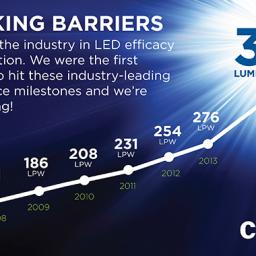
Being the first four-seat passenger plane relying primarily on a hydrogen fuel cell, the HY4 will take off to its maiden flight during the upcoming summer. The powertrain of this twin-fuselage, single-engine plane consists of a hydrogen storage unit, a low-temperature hydrogen fuel cell and a high-performance battery. The fuel cell converts the hydrogen energy directly into electric energy, powering the propeller. The only by-product in this process is pure water. If the hydrogen needed for the conversion process is generated in an electrolysis process powered through renewables, the HY4 flies completely emission-free.
The HY4 powertrain has already been tested successfully in the lab. To create enough lift to take off, the system must provide the maximum takeoff performance reliably for at least three minutes. During the test, the developers already succeeded in running the system for more than ten minutes at maximum power. The interplay between fuel cell and the battery, which unites the functions of an energy buffer and back-up power system, has also been proved. This paves the way to integrate the powertrain into the plane.
http://www.electronics-eetimes.com/news/fuel-cell-plane-brings-zero-emission-flying-within-reach-0Boeing flight-tested the
first manned fuel cell aircraft back in 2009.
A California start-up named Advanced Rail Energy Storage (ARES) has a clever idea for storing electrical power at the most extreme scales, e.g. those of the power grid itself. It's a battery of sorts. The scheme include
a really big hill and a few railroad cars. Energy to be stored in the system is first used to pull the rail cars via electric locomotives to the top of the hill, where it persists as potential energy. So long as the cars are at the top of the hill, the initial energy expended to get them up there remains trapped within the system. To recover that energy, the cars are simply lowered down the hill, turning built-in motor-generators in the process. This power is collected and then returned to the grid. The system is able to recover 80 percent of the power that it takes in, which is better than pumped-storage hydro (due to evaporation) or most batteries.
Earlier this month, ARES won approval from the Bureau of Land Management for a lease of 156 acres in southern Nevada featuring some train tracks on a hill and connectivity to the greater western US power grid. The 50 megawatts facility is not huge (enough to power 15,000 or so homes) but ARES imagines large regional facilities capable of 2 to 3 gigawatts in the future.

Cree's newly announced XP-G3 model of LED delivers 31% more lumens (lm) and 8% higher lm/W than its predecessor. Offering
over 205 lm/W at 350mA, this marks the first time commercially-available LEDs have exceed the efficiency of low-pressure sodium lamps, commonly found in municipal streetlights. OrangeTeK has already announced they are designing a new model of streetlight with XP-G3 LEDs. In practice, however, it's likely that most users of XP-G3 LEDs will run them at higher power with reduced efficiency, rather than install five times as many LEDs, due to price. Any efficiency improvements are good news, however, as numerous cities have already installed LED streetlights, and many more have plans in the works. This seems to be motivated by the whiter appearance of LEDs compared to sodium lights, which is ironically the major source of
opposition from the public, who complain about LED streetlights keeping them up at night, among other concerns.
Philips had previously demonstrated 200lm/W LEDs, and
claimed they'd be available to consumers by 2015, but a search of current products only reveals far less-efficient models. The XP-G3 is available for order right now. Cree has previously demonstrated LEDs in the lab that deliver
up to 303 lm/W, which is half-way to the maximum theoretical efficiency of this technology. Estimates are that as much as one quarter of the world's electrical consumption is used for lighting. Most consumers could see significant savings just by switching to florescent or LED lights in the first place. About
50 percent of lights sold in the US are halogen incandescents, which are only one quarter as efficient as LEDs, have far shorter operational lifetimes, and cost about one quarter as much.
A widely distributed scam email that quotes people's actual postal addresses, links to a dangerous form of ransomware called Maktub. The phishing emails told recipients they owed hundreds to businesses and that they could print an invoice by clicking on a link - but that leads to malware. "It's incredibly fast and by the time the warning message had appeared on the screen it had already encrypted everything of value on the hard drive - it happens in seconds. This is the desktop version of a smash and grab - they want a quick payoff."
Maktub doesn't just demand a ransom, it increases the fee - which is to be paid in bitcoins - as time elapses. During the first three days, the fee stands at 1.4 bitcoins, or approximately $580. This rises to 1.9 bitcoins, or $790, after the third day.
It's still not clear how scammers were able to gather people's addresses and link them to names and emails. The data could have come from a number of leaked or stolen databases. For some individuals without backups, paying the ransom might be the only way to retrieve their data. "However, every person that does that makes the business more valuable for the criminal and the world worse for everyone."
https://packetstormsecurity.com/news/view/26517/The-Ransomware-That-Knows-Where-You-Live.htmlWhen the 4.7-inch iPhone 6 came out in 2014, I refused to believe smaller size phones were truly dead. I didn't want to believe they'd done it, but the signs were clear. Other iPhone owners told me there would be an adjustment period. I would have an easier time using and holding onto a live fish, the way it flops around in my hand. The time I spend using my phone hasn't changed, but now my hands go numb and wrist and fingers ache holding it.
In bounding after large screens, phone makers seemed to ignore the usability issues that accompany them. Small studies have shown before that 4.3 inches is about as big as a phone can get before people start struggling to use it. The time to operate the phone slows down significantly because one-hand use is awkward-and that's for average men's hands. Assuming a normal distribution, a phone bigger than 4.3 inches is too big. People were especially annoyed about their inability to use the phone safely with one hand. Women's clothes also haven't caught up to the big-phone trend. It's weird, isn't it, how bad of a design choice this seems to be, from a company whose driving force is good design?
That brings us to the economic explanation, and my own personal conspiracy theory: There are powerful interests that want us to drop our phones so they can fix them and sell us new ones. If you took the earlier versions of the iPhone in, it wasn't uncommon to get a free replacement phone for one with a cracked screen. Fast forward a few years, and Apple now charges $99 to replace the screen on an iPhone 6S, even if the owner bought the AppleCare warranty.
http://motherboard.vice.com/read/a-big-phone-works-for-everyone-but-youIf you thought your Internet service was slow, consider being a customer of Cincinnati Bell's 75 baud Telegraph Grade service, on offer to subscribers since the 1800s for low-speed stock quotes, telegrams, and office-to-home communications. But don't consider it too long, because the service is about to be discontinued.
Remarkably, Cincinnati Bell still needs the permission of regulators to drop the Civil War era telegraph service and reminded regulators the change will have no impact on the "public convenience and necessity" because there have been no customers for the service for a long time. Cincinnati Bell's request would have gone unnoticed if it wasn't for the long legacy of the telegraph era. Western Union dispatched its last telegram on Jan. 27, 2006, after 155 years of continuous service, and largely kept quiet about it.
Those nostalgic for telegrams might be interested to know another company has risen where Western Union left off. iTelegram promises to bring back the experience of a messenger at your front door, but it's a costly trip down Memory Lane. A Priority Telegram costs $28.95 + $0.75 per word and is delivered usually within 24 hours, and includes proof of delivery. Or you could send an e-mail for approximately nothing.
http://stopthecap.com/2016/03/22/cincinnati-bell-plans-shutdown-telegraph-grade-service-offer-since-1800s/The epicenter of internet construction nightmares for homeowners is on Lambs Lane in Southeast Austin, where last October a flash flood allegedly caused by Google's construction crews blocking nearby storm drains brought two feet of water into the home of Arnulfo and Dolores Cruz, causing $100,000 in damages. Hundreds of other complaints cite yard and property damage, trespassing, and construction vehicles blocking access to driveways.
Residents cannot get compensation until they find out which of a litany of contractors and subcontractors working in the area dumped giant piles of dirt on their front lawns, dug open holes or trenches and left them uncovered, or used their yards to store construction equipment and supplies without permission. With Google, AT&T, and Time Warner Cable all upgrading infrastructure, it is difficult to determine who is responsible for what. That makes assigning responsibility for damages very difficult. In some neighborhoods, electric and water lines were severed by construction crews as well. Some residents have even resorted to calling police when crews trespass repeatedly on private property without the courtesy of prior notification or identification.
http://stopthecap.com/2016/03/01/google-fibers-contractors-create-headaches-austin-residents/Amazon.com has raised the free shipping minimum to $49 from $35 for non-Prime members, according to information provided on the Amazon website. The company hasn't published a press release with the news. For books, the threshold is still $25.
There is unlimited free two-day shipping for Prime members. "A higher minimum order requirement for free non-Prime shipping effectively increases the appeal of Prime membership, and Prime households spend disproportionately more than non-Prime households." A steep 32.8% increase in fulfillment costs had a negative impact on quarterly earnings announced on January 29. Prime membership increased 51% in 2015.
http://www.marketwatch.com/story/amazon-ups-free-shipping-minimum-to-49-from-35-for-non-prime-members-2016-02-22The emails offer a rare glimpse into a world where corporate interests can dictate their own science and scientists for hire willingly oblige. It's a phenomenon that's grown in recent decades as government-funded science dwindles. Its effects are felt not only in courtrooms but also in regulatory agencies that issue rules to try to prevent disease. The National Institutes of Health's budget for research grants has fallen 14 percent since its peak in 2004, according to the American Association for the Advancement of Science. With scarce resources, there's little money for academics to study chemicals that most already deem to be toxic. Yet regulatory officials and attorneys say companies have a strong financial interest in continuing to publish research favorable to industry.
Gradient belongs to a breed of scientific consulting firms that defends the products of its corporate clients beyond credulity, even exhaustively studied substances whose dangers are not in doubt, such as asbestos, lead and arsenic. Nearly half of Gradient's articles that are peer-reviewed are published in two journals with strong ties to industry, Critical Reviews in Toxicology and Regulatory Toxicology and Pharmacology. Gradient's scientists rarely acknowledge that a chemical poses a serious public health risk. The Center for Public Integrity analyzed 149 scientific articles and letters published by the firm's most prolific principal scientists. Ninety-eight percent of the time, they found that the substance in question was harmless at levels to which people are typically exposed. "They truly are the epitome of rented white coats."
http://www.publicintegrity.org/2016/02/08/19223/meet-rented-white-coats-who-defend-toxic-chemicals
Sky-high school electric bills have been in the spotlight this year. More than three dozen San Diego area districts combined forces to press the Public Utilities Commission to deny a large SDG&E rate hike last spring. "In San Diego, really every school is on a high demand rate tariff." The higher costs are known as "demand" charges, and they are unlike the tiered rates familiar to renters and homeowners. The utility pinpoints the single 15-minute period when a school pulls the most electricity, and multiplies that by $41.87 for each kilowatt. This can make for a rather high number when a heat wave spikes air conditioning use, or a cold snap prompts an outbreak of furtive space heaters.
The district is waiting for the state architect's approval to install large blocks of lithium ion batteries at 10 schools in early 2016. The silver-colored columns 8 feet high and 20 feet long will charge up on inexpensive nighttime electricity. Software inside will study each school's habits, relay warnings when use is climbing, and begin feeding battery power toward the school so the school will take less from the electric utility. Green Charge Networks thinks it can save Poway Unified School District some $133,000 its first year and $1.6 million over 10 years. If it doesn't, the school district doesn't pay for the batteries or their installation or maintenance.
http://inewsource.org/2015/11/30/san-diego-sdge-schools-batter-power/ Being the first four-seat passenger plane relying primarily on a hydrogen fuel cell, the HY4 will take off to its maiden flight during the upcoming summer. The powertrain of this twin-fuselage, single-engine plane consists of a hydrogen storage unit, a low-temperature hydrogen fuel cell and a high-performance battery. The fuel cell converts the hydrogen energy directly into electric energy, powering the propeller. The only by-product in this process is pure water. If the hydrogen needed for the conversion process is generated in an electrolysis process powered through renewables, the HY4 flies completely emission-free.
Being the first four-seat passenger plane relying primarily on a hydrogen fuel cell, the HY4 will take off to its maiden flight during the upcoming summer. The powertrain of this twin-fuselage, single-engine plane consists of a hydrogen storage unit, a low-temperature hydrogen fuel cell and a high-performance battery. The fuel cell converts the hydrogen energy directly into electric energy, powering the propeller. The only by-product in this process is pure water. If the hydrogen needed for the conversion process is generated in an electrolysis process powered through renewables, the HY4 flies completely emission-free.
